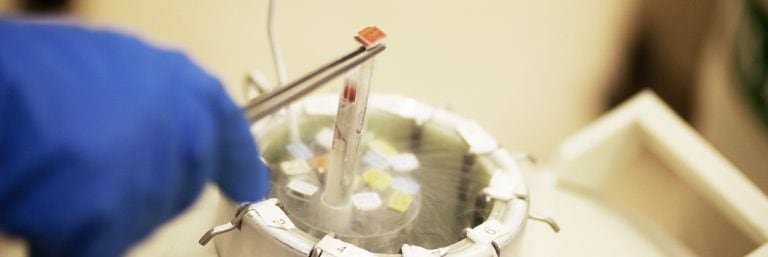Cryo cycle
In a so-called cryocycle, depending on any “basic gynaecological condition”, either in the natural cycle or under hormonal stimulation, an embryo that was frozen as an egg, fertilised egg or already as an embryo is transferred into the uterine cavity.
The effort involved is very low, because the patient usually only has to come once, on about the 12th day of the cycle, for an ultrasound so that the optimal day for the transfer can be determined. If it seems necessary, stimulation therapy can also be carried out with clomiphene tablets (possible disadvantage: flat mucous membrane) or by injection stimulation. In this case, it is not the oocytes that grow during stimulation that are important, but the hormone production of the follicles.
Another possibility of creating a cryocycle is the so-called “artificial cycle” or HRT Zayklus (HRT-Hormonal Replacement therapy). For this, the woman initially takes only oestrogens (orally, vaginally or transcutaneously), which causes the uterine lining to grow. When the optimal time is reached, progesterone (corpus luteum hormone) is added orally or vaginally. The advantage of this procedure is that it is very inexpensive and does not depend on the condition of the ovaries. The disadvantage is that, since no follicle and therefore no corpus luteum takes over the hormonal supply, the oestrogen and progesterone must continue to be taken until about the 10th week of pregnancy.
Depending on the type of cryopreservation and the type of frozen cell, pregnancy rates can be achieved that correspond to those in the “fresh cycle”. There are recent scientific observations that show that the chances of pregnancy in the cryocycle can even be slightly better than in the fresh cycle. However, this does not apply to slow freezing, which is still mostly carried out, but only to vitrification.
Except for sperm, we perform vitrification in our laboratory.

